- Administrator
- Albums and Singles
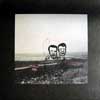 After several weeks of struggle trying to make any sense of this LiefElggren / Kevin Drumm collaboration I reluctantly looked for clues inwhat promotional blurb I could locate. I was rewarded with "criticswill find it shocking easy to find angles and write reviews forTriangles." But despite such discouraging irony it eventually hit methat this is a 70s concept album in the grand tradition things like "AnElectric Storm," "200 Motels" and "Meddle." Endearingly, the only rockmusic on the album is reminiscent of "A Pillow of Winds" but that'swere the stylistic similarities stop. The source material is modern andkaleidoscopic: electronic, clicky digital, noise, sine tones, drones,organ washes, short-wave radio excerpts and various samples. What makesthis a psychedelic concept album is the two uninterrupted sides ofmind-trip ? episodic and monumental with trance inducing static ordevelopmental phases disconnected by bizarre, sometimes jarringtransitions. With that model in mind Triangles is a very pleasing albumand makes perfect sense, in the sense that a psychedelic concept albumdoesn't make sense except in a highly elliptical sense. As anintellectual sound-art object, on the other hand, it makes no sense. Infact, the more I listen to it now, the more nostalgic I become forthose teenage, herbal enhanced headphone listening sessions of the 70s.And take care not to play Triangles on a cheesy stereo; until I playedit in the living room, I thought half the album was clever Cagiansilence while there is in fact nothing of the kind.
After several weeks of struggle trying to make any sense of this LiefElggren / Kevin Drumm collaboration I reluctantly looked for clues inwhat promotional blurb I could locate. I was rewarded with "criticswill find it shocking easy to find angles and write reviews forTriangles." But despite such discouraging irony it eventually hit methat this is a 70s concept album in the grand tradition things like "AnElectric Storm," "200 Motels" and "Meddle." Endearingly, the only rockmusic on the album is reminiscent of "A Pillow of Winds" but that'swere the stylistic similarities stop. The source material is modern andkaleidoscopic: electronic, clicky digital, noise, sine tones, drones,organ washes, short-wave radio excerpts and various samples. What makesthis a psychedelic concept album is the two uninterrupted sides ofmind-trip ? episodic and monumental with trance inducing static ordevelopmental phases disconnected by bizarre, sometimes jarringtransitions. With that model in mind Triangles is a very pleasing albumand makes perfect sense, in the sense that a psychedelic concept albumdoesn't make sense except in a highly elliptical sense. As anintellectual sound-art object, on the other hand, it makes no sense. Infact, the more I listen to it now, the more nostalgic I become forthose teenage, herbal enhanced headphone listening sessions of the 70s.And take care not to play Triangles on a cheesy stereo; until I playedit in the living room, I thought half the album was clever Cagiansilence while there is in fact nothing of the kind. - Side 1 - excerpt 1
- Side 1 - excerpt 2
- Side 1 - excerpt 3
- Side 2 - excerpt 1
- Side 2 - excerpt 2
- Side 2 - excerpt 3
Read More
- Administrator
- Albums and Singles
 What initially piqued my interest in Wilco and Yankee Hotel Foxtrotwas learning of Jim O?Rourke?s collaboration with frontman Jeff Tweedyon the production side of the disc. That and the fact that group wasnow employing the choice talents of Glenn Kotche, who also just happensto be O?Rourke?s drummer. As Loose Fur, this trio have recentlyreleased a collection of five vocal tunes and one instrumental whichhighlight the varied, yet equally brilliant songwriting andmusicianship of the two bandleaders and their sideman. "Laminated Cat"opens the disc with some laid back analog synths bubbling underneathdriving percussion and a blend of acoustic and electric guitars thatweave and mesh throughout, building into a wall of distortion and noisethat ring the tune out. From there, it doesn?t take too long to hear akind of formula that appears on some of the disc?s other songs: playthrough a great tune that?s well written, beautifully sung and nicelyarranged, then jam out on some of the changes for the next three tofour minutes with some improv/noise-type guitar embellishments and aplethora of percussion. Of course, this is also part of what makes thisdisc so appealing as the "we're here to play" attitude conveys anexcitement that can't help but be contagious. More laid back tracksbased around the acoustic guitar such as "You Were Wrong" showcase somestrong songwriting that comes across with a nice, earthy feel anddoesn't really require a whole lot of decorating thanks in part toKotche's time feel. The wry and edgy lyrics of O?Rourke?s two vocaltunes are complimented by three from Tweedy, whose imagery is evocativeand quite poetic. This strong collaboration is ripe with greatsongwriting, interesting arrangements and instrumentation (you willhear banjo) with a cohesion that shows just how much these guys aremasters of their craft.
What initially piqued my interest in Wilco and Yankee Hotel Foxtrotwas learning of Jim O?Rourke?s collaboration with frontman Jeff Tweedyon the production side of the disc. That and the fact that group wasnow employing the choice talents of Glenn Kotche, who also just happensto be O?Rourke?s drummer. As Loose Fur, this trio have recentlyreleased a collection of five vocal tunes and one instrumental whichhighlight the varied, yet equally brilliant songwriting andmusicianship of the two bandleaders and their sideman. "Laminated Cat"opens the disc with some laid back analog synths bubbling underneathdriving percussion and a blend of acoustic and electric guitars thatweave and mesh throughout, building into a wall of distortion and noisethat ring the tune out. From there, it doesn?t take too long to hear akind of formula that appears on some of the disc?s other songs: playthrough a great tune that?s well written, beautifully sung and nicelyarranged, then jam out on some of the changes for the next three tofour minutes with some improv/noise-type guitar embellishments and aplethora of percussion. Of course, this is also part of what makes thisdisc so appealing as the "we're here to play" attitude conveys anexcitement that can't help but be contagious. More laid back tracksbased around the acoustic guitar such as "You Were Wrong" showcase somestrong songwriting that comes across with a nice, earthy feel anddoesn't really require a whole lot of decorating thanks in part toKotche's time feel. The wry and edgy lyrics of O?Rourke?s two vocaltunes are complimented by three from Tweedy, whose imagery is evocativeand quite poetic. This strong collaboration is ripe with greatsongwriting, interesting arrangements and instrumentation (you willhear banjo) with a cohesion that shows just how much these guys aremasters of their craft. Read More
- Michael Patrick Brady
- Albums and Singles
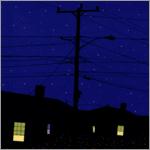 While grand flourishes and touches of color may capture your eye, asolid foundation is key to making everything work together. Subtle,almost unseen nuances set the scene for everything built upon it. Thekey is finding the right balance, to not be so subtle as to beunnoticed. On Helms' latest release, McCarthy, the band delves into those latent shades, at times almost getting lost, in order to describe themselves in a different way. McCarthyseems to evoke the moments between sleep and waking, when the conscioushasn't fully kicked in and the unconscious hasn't fully departed.Thoughts and images appear and at once evaporate, failing to make adistinct impression, only leaving a faint trace behind. Much of McCarthyevokes this ephemeral nature, each song almost blurring with the next."Singer and guitarist Sean McCarthy spills out his lyrics in a languid,sleepy manner never fully rising above the midtempo drone of bassistTina Helms and drummer Dan McCarthy. McCarthy seems to aspireto twilight, the arrangements blinking like stars peaking throughfading sunlight, establishing a melody or a riff and then shifting itup and down, back and forth, as on "It Takes Skin to Win." While thistechnique works for Helms as on the aforementioned track, it can attimes become tedious. Helms is most successful when they lurch out oftheir grogginess as on the soaring opener track, "The Hypochondriac'sLast Words," which allows vocalist Sean to show some dynamics in hisvoice. Deviations are welcome, and when "The Ten Thousand Things"arrives, it's not a moment too soon. The rhythm section chugging alongsolidly, punctuated by a thrusting crescendo of guitar that stands outagainst the albums shy demeanor. "Robots Are Great, But Are We ReadyFor Them to Dance on Their Own?" succeeds in building a compelling ideawith only a simple repeated riff, imbued with urgency and energy. Thealbum closes with the unfortunate "Cornish, New Hampshire," dragging onwith a meandering recitation of items in a drawer, daring the listenerto endure the song's seven minute duration. Despite their individualissues, the songs on McCarthy work well together to create astarry, midnight blue atmosphere that makes the album a pleasantlisten. The concern is not on specifics, but on a broader,impressionistic expression of sense and feeling. While the thoughts maydisappear as soon as we open our eyes, the feelings stay with us, thevague memories of sensation that merely hint and never tell.
While grand flourishes and touches of color may capture your eye, asolid foundation is key to making everything work together. Subtle,almost unseen nuances set the scene for everything built upon it. Thekey is finding the right balance, to not be so subtle as to beunnoticed. On Helms' latest release, McCarthy, the band delves into those latent shades, at times almost getting lost, in order to describe themselves in a different way. McCarthyseems to evoke the moments between sleep and waking, when the conscioushasn't fully kicked in and the unconscious hasn't fully departed.Thoughts and images appear and at once evaporate, failing to make adistinct impression, only leaving a faint trace behind. Much of McCarthyevokes this ephemeral nature, each song almost blurring with the next."Singer and guitarist Sean McCarthy spills out his lyrics in a languid,sleepy manner never fully rising above the midtempo drone of bassistTina Helms and drummer Dan McCarthy. McCarthy seems to aspireto twilight, the arrangements blinking like stars peaking throughfading sunlight, establishing a melody or a riff and then shifting itup and down, back and forth, as on "It Takes Skin to Win." While thistechnique works for Helms as on the aforementioned track, it can attimes become tedious. Helms is most successful when they lurch out oftheir grogginess as on the soaring opener track, "The Hypochondriac'sLast Words," which allows vocalist Sean to show some dynamics in hisvoice. Deviations are welcome, and when "The Ten Thousand Things"arrives, it's not a moment too soon. The rhythm section chugging alongsolidly, punctuated by a thrusting crescendo of guitar that stands outagainst the albums shy demeanor. "Robots Are Great, But Are We ReadyFor Them to Dance on Their Own?" succeeds in building a compelling ideawith only a simple repeated riff, imbued with urgency and energy. Thealbum closes with the unfortunate "Cornish, New Hampshire," dragging onwith a meandering recitation of items in a drawer, daring the listenerto endure the song's seven minute duration. Despite their individualissues, the songs on McCarthy work well together to create astarry, midnight blue atmosphere that makes the album a pleasantlisten. The concern is not on specifics, but on a broader,impressionistic expression of sense and feeling. While the thoughts maydisappear as soon as we open our eyes, the feelings stay with us, thevague memories of sensation that merely hint and never tell. - It Takes Skin to Win
- The Ten Thousand Things
- Robots are Great, But are we Ready for Them to Dance on their Own?
Read More
- Administrator
- Albums and Singles
 This is the second Go-Betweens album since their resuscitation threeyears ago, and the band's sound is still surprisingly consistent.During their twenty-year existence, the Go-Betweens have been thepedagogues of jangly pop, ably instructing in their art and edifyingcountless bands who have followed in their footsteps but never hopedever to overtake the teacher as would be normal in the course of thementor/apprentice relationship. The Go-Betweens maintain theirmentorship not by any tyrannical stranglehold, but rather by aperfection of pop which other bands seem unable to master (or evensometimes muster). It usually takes me a few listens through to pickout my best Go-Betweens songs from any one album, and this record is nodifferent. In the end, the differences between the songs which I likeand the ones which I just listen to are subtle; they amount to acertain inflection here, a deeper crooning there. What I can sense fromthese post-reunification albums is that the inflections and crooningshave become less intense and less intoned, for whatever reason (I don'tthink it is so much age as it is growth). As a result, fewer songs jumpout at me. The first half of Bright Yellow Bright Orangebest approaches the glory of older releases. "Poison in the Walls" willnot only recall older songs like "Part Company," but can show what Imean when I talk about the minimized inflection: the elongatedpronunciation of "sometimes" is the hallmark of great Go-Betweenssongs, but in this case is slightly less energetic than I would haveexpected or than would have been recorded circa 1984. The surface ofthe next song, "Mrs. Morgan," screams to be compared to Lou Reed, buteven his songs were never so pleasantly lackadaisical as this. Despiteall of its good, this record simply seems too summery and relaxed for aproper appreciation presently. The anxiety of winter frustratingly dogsthe songs on this perhaps prematurely released album. 'Bright YellowBright Orange' implies the setting in which it should ideally belistened to: in the bright sun-filled day of the early summer when thewarmth makes its first cadenced march back into the air, or, if you aresomewhat more headstrong and jumpy, maybe at the falling of the firstspring rain.
This is the second Go-Betweens album since their resuscitation threeyears ago, and the band's sound is still surprisingly consistent.During their twenty-year existence, the Go-Betweens have been thepedagogues of jangly pop, ably instructing in their art and edifyingcountless bands who have followed in their footsteps but never hopedever to overtake the teacher as would be normal in the course of thementor/apprentice relationship. The Go-Betweens maintain theirmentorship not by any tyrannical stranglehold, but rather by aperfection of pop which other bands seem unable to master (or evensometimes muster). It usually takes me a few listens through to pickout my best Go-Betweens songs from any one album, and this record is nodifferent. In the end, the differences between the songs which I likeand the ones which I just listen to are subtle; they amount to acertain inflection here, a deeper crooning there. What I can sense fromthese post-reunification albums is that the inflections and crooningshave become less intense and less intoned, for whatever reason (I don'tthink it is so much age as it is growth). As a result, fewer songs jumpout at me. The first half of Bright Yellow Bright Orangebest approaches the glory of older releases. "Poison in the Walls" willnot only recall older songs like "Part Company," but can show what Imean when I talk about the minimized inflection: the elongatedpronunciation of "sometimes" is the hallmark of great Go-Betweenssongs, but in this case is slightly less energetic than I would haveexpected or than would have been recorded circa 1984. The surface ofthe next song, "Mrs. Morgan," screams to be compared to Lou Reed, buteven his songs were never so pleasantly lackadaisical as this. Despiteall of its good, this record simply seems too summery and relaxed for aproper appreciation presently. The anxiety of winter frustratingly dogsthe songs on this perhaps prematurely released album. 'Bright YellowBright Orange' implies the setting in which it should ideally belistened to: in the bright sun-filled day of the early summer when thewarmth makes its first cadenced march back into the air, or, if you aresomewhat more headstrong and jumpy, maybe at the falling of the firstspring rain. Read More
- Administrator
- Albums and Singles
The BBC Radiophonic Workshop's theme to the Doctor Who series firstaired in 1963, and I'm willing to bet that some, if not all, of thefuture members of the Human League were watching and listening veryclosely. Those spine-tingling washes of synthesizers and alien metallicclangs must have seemed pretty mindblowing to a group of "blind youth"growing up in impoverished Sheffield. Lap dissolve to nearly 15 yearslater, and Phillip Oakey, Martyn Ware and Ian Marsh have formed TheFuture, soon to be rechristened the Human League. While fully revelingin the punk attitude and political urgency of their contemporaries,Human League's music always sounded a little different, theircollective unconscious memory of that Doctor Who theme having pushedthem towards the formation of an all electronic group. Not drums, bassand guitars augmented by synthesizers, mind you. Rather, The HumanLeague were one of the first electronic purists; they used exclusivelysynthesizers and drum machines. What could be more standoffish and punkthan that? From the beginning, Human League had a keen talent foruptempo songs and catchy melodies that set them apart from fellowSheffield bands like Cabaret Voltaire and 23 Skidoo. The Human Leaguewere harboring a desire to make the world's greatest pop record.Electronic pop will never save the world, it's true, but listening tothese Human League re-issues after 20 years of musical developments isan eye-opening experience. Pop music like the Human League's isresistant to musical modes and trends, and if you submit to itspleasures, it is timeless and perfect. - Jonathan Dean
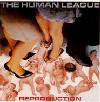 1979's Reproductionis the first full-length LP by The Human League, following some 12"singles and EPs released the year before. The reissue treatment fullyremasters and restores the sound, as well as adding loads ofsupplemental material, including the ultra-rare The Dignity of Labour EP and their first single Being Boiled. Reproductionfinds the group in pristine form, matching dark, futuristic lyrics withmechanized beats, icy synth melodies and keyboard swooshes. PhilOakey's lyrics elaborate on his childish, science-fiction obsessionwith an apocalyptic view of the future. The second track "Circus ofDeath" is a rambling, surreal narrative about a future holocaustperpetrated by narcotized clowns. Fans of early Gary Numan classicssuch as "Down in the Park" will appreciate this album. All of theelements of the latter day, chart-topping Human League are present, butthe album maintains a consistently arch, clinical distance from thelistener. This is only enhanced by Oakey's wry, detached wit andpassionless delivery. One of Human League's best songs is here, thestrangely upbeat "Empire State Human," a song about avarice and thedesire to attain superhuman powers, set against a relentlessproto-electro beat. By far the strangest track, "Morale," begins withsome ambient synthesizer arpeggios, reminiscent of Tangerine Dream.Philip Oakey pipes in with some mournful lyrics, and the song slowlysegues into an absurdly overproduced cover of The Righteous Brothers'"You've Lost That Loving Feeling." I'm not sure what the League werethinking here, but it somehow works. The Dignity of Labourfunctions as a four-part tribute to early electronic pioneers likeMorton Subotnick, Raymond Scott and Bernard Parmegiani. It's completelyinstrumental, and consists of a series of musique concrete soundscapes.As such, it is the most avant-garde recording that The Human Leagueever released. Tacked onto the end of this re-release is The HumanLeague's first single, "Being Boiled (Fast Version)." I won't go into adescription of this song as it is has popped up on at least 20compilations in just the past year. This version has the exact sametempo as every other version of the song I've heard, so I'm not surewhat makes this a "fast" version, however. Reproduction is essential listening for anyone getting into The Human League or the Sheffield post-punk scene.
1979's Reproductionis the first full-length LP by The Human League, following some 12"singles and EPs released the year before. The reissue treatment fullyremasters and restores the sound, as well as adding loads ofsupplemental material, including the ultra-rare The Dignity of Labour EP and their first single Being Boiled. Reproductionfinds the group in pristine form, matching dark, futuristic lyrics withmechanized beats, icy synth melodies and keyboard swooshes. PhilOakey's lyrics elaborate on his childish, science-fiction obsessionwith an apocalyptic view of the future. The second track "Circus ofDeath" is a rambling, surreal narrative about a future holocaustperpetrated by narcotized clowns. Fans of early Gary Numan classicssuch as "Down in the Park" will appreciate this album. All of theelements of the latter day, chart-topping Human League are present, butthe album maintains a consistently arch, clinical distance from thelistener. This is only enhanced by Oakey's wry, detached wit andpassionless delivery. One of Human League's best songs is here, thestrangely upbeat "Empire State Human," a song about avarice and thedesire to attain superhuman powers, set against a relentlessproto-electro beat. By far the strangest track, "Morale," begins withsome ambient synthesizer arpeggios, reminiscent of Tangerine Dream.Philip Oakey pipes in with some mournful lyrics, and the song slowlysegues into an absurdly overproduced cover of The Righteous Brothers'"You've Lost That Loving Feeling." I'm not sure what the League werethinking here, but it somehow works. The Dignity of Labourfunctions as a four-part tribute to early electronic pioneers likeMorton Subotnick, Raymond Scott and Bernard Parmegiani. It's completelyinstrumental, and consists of a series of musique concrete soundscapes.As such, it is the most avant-garde recording that The Human Leagueever released. Tacked onto the end of this re-release is The HumanLeague's first single, "Being Boiled (Fast Version)." I won't go into adescription of this song as it is has popped up on at least 20compilations in just the past year. This version has the exact sametempo as every other version of the song I've heard, so I'm not surewhat makes this a "fast" version, however. Reproduction is essential listening for anyone getting into The Human League or the Sheffield post-punk scene.
samples:
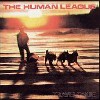 Travelogue is truly a transitional effort, containing both the Kubrickian, technology-obsessed sound that dominated Reproduction, and a healthy dose of the clever, infectious pop that would characterize Dare.The album kicks off with its best song, "The Black Hit of Space," atruly funny/scary song about a 12" from the future that sucks all ofits listeners into a black hole. The music on this track is remeniscentof a lot of the formulaic industrial-style electro and EBM thatdominated the 80's and early 90's. The Human League were pretty muchthe first on the block with this sound, before it had become a hopelessclich?. "Only After Dark" comes on like an electrop Beach Boys song,with its bouncy rhythm and fun vocal harmonies. The rest of the albumis a hit-or-miss affair. Most of the tracks are flawlessly arranged andproduced, but the songwriting is not nearly as strong as the songs on Reproduction or Dare."Being Boiled" also makes an appearance on this album, but it has beenreinvisioned as a hyperactive disco-fied Georgio Moroder track.There are seven extra tracks on this re-issue, most of them fairlydisposable, but fun nonetheless. Who could resist the wackiness oftheir roboticized glam-rock medley of Gary Glitter's "Rock n' Roll" andIggy Pop's "Nightclubbing"? The League also pay homage to theirchildhood science fiction obsession on "Tom Baker," a tribute toeveryone's favorite actor in the role of Doctor Who.
Travelogue is truly a transitional effort, containing both the Kubrickian, technology-obsessed sound that dominated Reproduction, and a healthy dose of the clever, infectious pop that would characterize Dare.The album kicks off with its best song, "The Black Hit of Space," atruly funny/scary song about a 12" from the future that sucks all ofits listeners into a black hole. The music on this track is remeniscentof a lot of the formulaic industrial-style electro and EBM thatdominated the 80's and early 90's. The Human League were pretty muchthe first on the block with this sound, before it had become a hopelessclich?. "Only After Dark" comes on like an electrop Beach Boys song,with its bouncy rhythm and fun vocal harmonies. The rest of the albumis a hit-or-miss affair. Most of the tracks are flawlessly arranged andproduced, but the songwriting is not nearly as strong as the songs on Reproduction or Dare."Being Boiled" also makes an appearance on this album, but it has beenreinvisioned as a hyperactive disco-fied Georgio Moroder track.There are seven extra tracks on this re-issue, most of them fairlydisposable, but fun nonetheless. Who could resist the wackiness oftheir roboticized glam-rock medley of Gary Glitter's "Rock n' Roll" andIggy Pop's "Nightclubbing"? The League also pay homage to theirchildhood science fiction obsession on "Tom Baker," a tribute toeveryone's favorite actor in the role of Doctor Who.
samples:
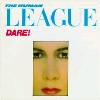 In my humble opinion, Dareis one of the greatest pop albums of all time, and for me it representsthe absolute zenith of the new wave electropop of the early 80's. It isessential listening for fans of the so-called "modern" pop of MagneticFields, The Aluminum Group or any of the new overabundant crop of"electroclash" groups like Ladytron or Soviet. The new digital popmusic characterized by groups like Lali Puna, The Postal Service andTarwater has also been informed by The Human League's unparalleledclassic. Released in 1981, The Human League have by this time lost twoof their founding members, Ian Marsh and Martyn Ware, who left to formthe new wave duo Heaven 17. With Marsh and Ware's departure, HumanLeague have put aside all of the cyber-punk posturing, to focusexclusively on making ten superbly realized, perfect pop songs. Whatresulted is the Human League's masterpiece, one of the rare albumswhere each and every track is a great song in its own right. PhilipOakey's lyrics contain decidedly more "human" themes this time around,with some very grown-up songs about lost love, the modern world, murderand "the law." The production is a true marvel, gleaming and seamless."The Things That Dreams are Made Of" kicks off the record with abeautiful synth melody and flawless drum programming. Soon, Oakey isreading off an inspired list of the things that his dreams are made of:"New York, ice cream, TV, travel, good times, Johnny, Joey, Dee Dee,good times...". Witty, urbane lyrics and brilliant pop hooks abound onthis record. Things take a rather disturbing turn with the somber,darkwave track "Seconds," which is as dead serious as The Human Leagueget. The album ends with The Human League's biggest hit, and also oneof their best songs, "Don't You Want Me," with its he said/she saidlyrics and infectiously catchy chorus. If you thought this was justmindless 80's flashback music, listen again. As a bonus with Caroline'sreissue, the entire Love and Dancing LP has been included.Originally credited to The League Unlimited Orchestra (in a tribute toBarry White's instrumental side-project), Love and Dancing is one of the first examples of a true remix album. Seven tracks from Dareand one extra track are specially remixed by producer Martin Rushent,whose liberal use of echo and a complement of wacky sound effects andintrumental fills is immediately reminiscent of the early dub approachto remixing. Love and Dancing is quite a sought-after rarity on LP, so to have these tracks available on this re-release is a real treat.
In my humble opinion, Dareis one of the greatest pop albums of all time, and for me it representsthe absolute zenith of the new wave electropop of the early 80's. It isessential listening for fans of the so-called "modern" pop of MagneticFields, The Aluminum Group or any of the new overabundant crop of"electroclash" groups like Ladytron or Soviet. The new digital popmusic characterized by groups like Lali Puna, The Postal Service andTarwater has also been informed by The Human League's unparalleledclassic. Released in 1981, The Human League have by this time lost twoof their founding members, Ian Marsh and Martyn Ware, who left to formthe new wave duo Heaven 17. With Marsh and Ware's departure, HumanLeague have put aside all of the cyber-punk posturing, to focusexclusively on making ten superbly realized, perfect pop songs. Whatresulted is the Human League's masterpiece, one of the rare albumswhere each and every track is a great song in its own right. PhilipOakey's lyrics contain decidedly more "human" themes this time around,with some very grown-up songs about lost love, the modern world, murderand "the law." The production is a true marvel, gleaming and seamless."The Things That Dreams are Made Of" kicks off the record with abeautiful synth melody and flawless drum programming. Soon, Oakey isreading off an inspired list of the things that his dreams are made of:"New York, ice cream, TV, travel, good times, Johnny, Joey, Dee Dee,good times...". Witty, urbane lyrics and brilliant pop hooks abound onthis record. Things take a rather disturbing turn with the somber,darkwave track "Seconds," which is as dead serious as The Human Leagueget. The album ends with The Human League's biggest hit, and also oneof their best songs, "Don't You Want Me," with its he said/she saidlyrics and infectiously catchy chorus. If you thought this was justmindless 80's flashback music, listen again. As a bonus with Caroline'sreissue, the entire Love and Dancing LP has been included.Originally credited to The League Unlimited Orchestra (in a tribute toBarry White's instrumental side-project), Love and Dancing is one of the first examples of a true remix album. Seven tracks from Dareand one extra track are specially remixed by producer Martin Rushent,whose liberal use of echo and a complement of wacky sound effects andintrumental fills is immediately reminiscent of the early dub approachto remixing. Love and Dancing is quite a sought-after rarity on LP, so to have these tracks available on this re-release is a real treat.
samples:
Read More
- Administrator
- Albums and Singles
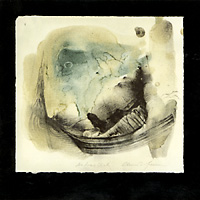 There are a number of reasons I love vinyl and strongly advocate vinyl usage: it actually -does- sound better for louder recordings with the whole signal-to-noise ratio thing; it comes with pretty big pictures if you're lucky; DJs (and those who think they are) can match beats, scrach and mix; and idiot roommates/junkie friends/random thieves rarely steal it as it's too big and heavy and used stores hate to sell used vinyl. However, let me go on record as saying that for quieter, more meditative recordings, I would prefer the usage of vinyl be very limited (if not eliminated). Every time a record is pulled out of its protective sleeve, thousands of microscopic particles collect—this is inevitable. With the more quiet recordings, the buildup of particles in the grooves is audibly evident. Mirror recordings are all lengthy soundscapes, gently combining musical and non-musical sound sources over long periods of time, with startlingly hypnotic effects. The difference in hearing a vinyl recording of the very first Mirror album released on record and the CD which was issued last week is absolutely amazing.Streamline
There are a number of reasons I love vinyl and strongly advocate vinyl usage: it actually -does- sound better for louder recordings with the whole signal-to-noise ratio thing; it comes with pretty big pictures if you're lucky; DJs (and those who think they are) can match beats, scrach and mix; and idiot roommates/junkie friends/random thieves rarely steal it as it's too big and heavy and used stores hate to sell used vinyl. However, let me go on record as saying that for quieter, more meditative recordings, I would prefer the usage of vinyl be very limited (if not eliminated). Every time a record is pulled out of its protective sleeve, thousands of microscopic particles collect—this is inevitable. With the more quiet recordings, the buildup of particles in the grooves is audibly evident. Mirror recordings are all lengthy soundscapes, gently combining musical and non-musical sound sources over long periods of time, with startlingly hypnotic effects. The difference in hearing a vinyl recording of the very first Mirror album released on record and the CD which was issued last week is absolutely amazing.Streamline
With the unpreventable crackles and pops gone, the original sounds are now completely all-encompassing, no longer taking a backseat to high pitched nuissances. Gongs play, highway sounds, rustling winds, chimes echo and sustain, and time is fleeting.
Fourteen minutes pass in an instant. I can't tell if I'm hearing the tolls of a boat bell ringing, or chimes from before sped up or slowed down. Thirty minutes have elapsed and I'm even deeper in a trance with rustling water, low tones, trains perhaps? Forty minutes elapse and a low hum has taken over, like a bowed cello or a digeridoo, faded out into what could be a stream, distorted perhaps slighly enough to ambiguity, but intact enough not to sound like any effects are being used. At the end of forty-three minutes, all sounds cease and I'm honestly aching for more.
Sure, I can pull out the records for the other albums but now that I've tasted the pure stuff, it's going to be hard to compete. There's a reason why some of this music fetches high prices on auctions, some of it is simply fantastic. The advantages of this CD is that it's about $140 cheaper than the vinyl right now, it doesn't have to be flipped over halfway through, and it won't jump if you're playing it while on a peaceful train ride (yes there were vinyl-playing boomboxes available at one time!). There aren't individual pieces of artwork included, however, but images of four of Christoph Heemann's favorite ones are. Furthermore, in the time to listen to this start to finish, I'm sure a nice painting can be drawn. 
Read More
- Administrator
- Albums and Singles
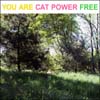 Without the assistance of over-the-top production, Chan Marshall has managed to craft one of the best albums I've heard this year. Her fifth album (sixth counting The Covers Record) is an amazing adventure through the sounds of loneliness, resignation, memory, and empowerment.Matador
Without the assistance of over-the-top production, Chan Marshall has managed to craft one of the best albums I've heard this year. Her fifth album (sixth counting The Covers Record) is an amazing adventure through the sounds of loneliness, resignation, memory, and empowerment.Matador
The power of her piano, guitar, and voice all resonate throughout the album as clearly as a solo bird's song echoing through the trees on a hot summer day. None of the instrumentation is overly-processed or produced, thankfully. The piano part on "I Don't Blame You" rings clear and true as Marshall's voice floats effortlessly over the top, winding down a dirt road filled with memories both painful and endearing. Energizing tunes like "Speak For Me," "He War," and "Shaking Paper" are going to feel great this summer on the road with the windows rolled down. Visions of the tall grass and green trees and a warm breeze rushing through hair, probably at about 60 or so miles per hour, are all possible on this cold winter day thanks to Chan. Tunes like "Werewolf," "Fool," and the cover of John Lee Hooker's "Keep On Runnin'," on the other hand, evoke images of dark and/or tense and lonely nights under the moon and stars. The best part about this album is that I've barely looked through the lyric sheet provided and yet I feel as if I understand exactly what Marshall is singing about. Her ideas and emotions bleed through the instruments and the sound of her voice with such grace and ease (and the music just sounds so damned good!). The one-two-three punch of "Babydoll," "Maybe Not," and "Names" is both uplifting and heart wrenching and is worth the price of admission alone. All the songs on this album have been stuck in my head for days now and I simply cannot reccomend it enough. It is refreshing to hear an album of this caliber that is both simple and stunning. 
Read More
- Administrator
- Albums and Singles
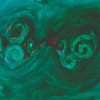 By now, the house lights have come up, the violinist has left with somegirl, the drummer is loading up his truck, and a lone guitaristcontinues on. If Dirty Three is appropriate for the late, late night,Mick Turner's music is most definitely appropriate for after, afterhours. Like other Mick Turner albums, Mothis a collection of numerous short but pretty pieces. This time around,there's 19 untitled parts. While it lacks the more solid songstructures with Tren Brothers and Bonnelvill releases, the expectantbeauty and variety has remained. Turner's instrument is simply theguitar and rarely something more. With the use a looping pedal, layersare added, removed, played with and reversed to make beautiful guitarcollages. Mike Krassner (Boxhead Ensemble, Edith Frost, Pinetop Seven),who co-produced the album joins up on piano by "Part 5," and appears onpiano for a number of parts thereafter, until, by "Part 18," (I thinkit's mis-labelled on the sleeve) they're joined on organ by RyanHembrey (also of the Boxhead Ensemble, Edith Frost, and Pinetop Seven).While the songs are delicate and gorgeous, I would probably recommendthis album only for existing fans, as other fantastic introductions toMick Turner's work would include music as Bonnelvill with Jessica Bileyon violin and piano or being fortunate enough to catch him live wherehe blissfully lets the songs drift for great lengths.
By now, the house lights have come up, the violinist has left with somegirl, the drummer is loading up his truck, and a lone guitaristcontinues on. If Dirty Three is appropriate for the late, late night,Mick Turner's music is most definitely appropriate for after, afterhours. Like other Mick Turner albums, Mothis a collection of numerous short but pretty pieces. This time around,there's 19 untitled parts. While it lacks the more solid songstructures with Tren Brothers and Bonnelvill releases, the expectantbeauty and variety has remained. Turner's instrument is simply theguitar and rarely something more. With the use a looping pedal, layersare added, removed, played with and reversed to make beautiful guitarcollages. Mike Krassner (Boxhead Ensemble, Edith Frost, Pinetop Seven),who co-produced the album joins up on piano by "Part 5," and appears onpiano for a number of parts thereafter, until, by "Part 18," (I thinkit's mis-labelled on the sleeve) they're joined on organ by RyanHembrey (also of the Boxhead Ensemble, Edith Frost, and Pinetop Seven).While the songs are delicate and gorgeous, I would probably recommendthis album only for existing fans, as other fantastic introductions toMick Turner's work would include music as Bonnelvill with Jessica Bileyon violin and piano or being fortunate enough to catch him live wherehe blissfully lets the songs drift for great lengths. Read More
- Administrator
- Albums and Singles
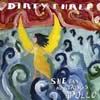 It's late and the bartender has announced last call. Tonight wasfantastic, as a number of singers graced the stage to stand in thespotlight, whether it was an ex junkie, a rich hick with a spookybeard, an overemotional freaky chick, or a cute male/female duo whoharmonize beautifully well. The parade of stars has come and gone. Thecrowd has been reduced to the small number of staff and a couple otherswho similarly are just trying to let the world stop spinning. On stage,the trio that sat in the back are still playing quietly. A triangularsymmetry is met by the lonely violinist, shuffling drummer andreflective guitarist. Only now does it make sense that while thesefolks can back up a variety of egos, their knowledge of, attraction to,and attention in which they pay each other is truly remarkable. WarrenEllis, Mick Turner, and Jim White have been playing as Dirty Three foryears, and with each album, it seems their bond grows stronger. Whetherit's with the driving force of "She Has No Strings," the quiet pianoand malleted-drums of "Long Way to Go with No Punch," or the pluckedviolins on "No Stranger Than That," they demonstrate that like anygreat ensemble, there is never one member who is more or less importantthan the other. Sure, they take turns leading the group here and there,like the unexpected fuzz guitar on "Rude (and then some slightreturn)," the mad drum solo on "No Sister Let Them Try and Follow," andthe multiple-layered violins on "She Lifted the Net." Dirty Three areone of the most reliably consistent bands and I have never been letdown by any of their records. Furthermore, it's always an extra specialtreat to see any of them live together, alone, or with others, and I'mhappy that it seems like they're always on the road in some band oranother.
It's late and the bartender has announced last call. Tonight wasfantastic, as a number of singers graced the stage to stand in thespotlight, whether it was an ex junkie, a rich hick with a spookybeard, an overemotional freaky chick, or a cute male/female duo whoharmonize beautifully well. The parade of stars has come and gone. Thecrowd has been reduced to the small number of staff and a couple otherswho similarly are just trying to let the world stop spinning. On stage,the trio that sat in the back are still playing quietly. A triangularsymmetry is met by the lonely violinist, shuffling drummer andreflective guitarist. Only now does it make sense that while thesefolks can back up a variety of egos, their knowledge of, attraction to,and attention in which they pay each other is truly remarkable. WarrenEllis, Mick Turner, and Jim White have been playing as Dirty Three foryears, and with each album, it seems their bond grows stronger. Whetherit's with the driving force of "She Has No Strings," the quiet pianoand malleted-drums of "Long Way to Go with No Punch," or the pluckedviolins on "No Stranger Than That," they demonstrate that like anygreat ensemble, there is never one member who is more or less importantthan the other. Sure, they take turns leading the group here and there,like the unexpected fuzz guitar on "Rude (and then some slightreturn)," the mad drum solo on "No Sister Let Them Try and Follow," andthe multiple-layered violins on "She Lifted the Net." Dirty Three areone of the most reliably consistent bands and I have never been letdown by any of their records. Furthermore, it's always an extra specialtreat to see any of them live together, alone, or with others, and I'mhappy that it seems like they're always on the road in some band oranother.Read More
- Administrator
- Albums and Singles
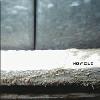 Vivo is a primarily electronic label based in Poland with six releases to date, including the recommended Black Faction remix album 'Reworked.' With this compilation, they present 49 minutes worth of "narrative sonic stories," ("nowele" is Polish for "short stories") by little known but impressive artists from the US, Poland and Japan. "Uruk," by Maciek Szymczuk sets a rhythmic foundation of pops and gelatinous warbles as a lucid two note ping makes for melody.
Vivo is a primarily electronic label based in Poland with six releases to date, including the recommended Black Faction remix album 'Reworked.' With this compilation, they present 49 minutes worth of "narrative sonic stories," ("nowele" is Polish for "short stories") by little known but impressive artists from the US, Poland and Japan. "Uruk," by Maciek Szymczuk sets a rhythmic foundation of pops and gelatinous warbles as a lucid two note ping makes for melody.
"Awar Fedbk," by Shapethrower slowly casts resonant synth waves over gears and light beats. "NonStopFilm," by FilmFilter, the lone Japanese entry, is uniquely bizarre as numerous samples—pop vocals, cartoon-like sound effects, a twinkle bell, rips and tears, metal on metal, etc.—violently mesh in a Nurse With Wound-meets-Mouse on Mars manner. Yume's three tracks are mostly soft, truly ambient environments, populated with chimes and the sonic residue of shifting clutter. Phasmid's "The Heroine Of Goat Bells," and "Mehr Licht," (More Lights) feature playful melodies plunked out on vibraphone-like instruments, the former forgoing the latter's big bass tones and tiny beats for bird song and ritualistic thumps. The cryptically titled "I=B000-B7FF.CRC," and "There's No Way," by Zenial and Palsecam (the latter vs. Szymczuk) both overlay mellow ambiances with more pops and slightly more aggressive electronics. Finally, "Six Sigma (Blackbelt Rmx)," by Alphabet1 mixes moans, mid tempo drum loops, and electric guitar notes, all effected in one way or another. Altogether, this is a very pleasant array of electro-organic sounds. "Now:Le" is one of those compilations that you won't have to skip any tracks and you'll want to repeat quite a few. 
 
Read More
- Administrator
- Albums and Singles
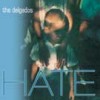 It's simply amazing what a band can accomplish when they trulycollaborate. The Delgados had released three proper albums, includingthe brilliant The Great Eastern,when they were asked to contribute the soundtrack to a film ofpaintings. The film, by an artist named Joe Coleman, was violent,brutal even. As the first time the band had written music togetherwithout the benefit of Alun Woodward or Emma Pollock's lyrics, it, too,was a brutal experience. It was rewarding, however, as it showed theband how beautiful their music could be without words. It's surprisingthat the people who signed Mogwai wouldn't have tried this before now,but they were then set to make some of the most beautiful music oftheir lives. It's not that instrumental was where they needed to go,but the music had to come first this time, and so it does on Hate, easily their best work yet by miles. By the band's own admission, where Easternwas a great record, it was brought about because producer Dave Fridmannwas able to bring commonalities together in the mixing process. Themusic was actually frighteningly disparate, because different memberswrote different pieces. Fridmann is with them again on Hate,but this time he had less to do, as the band had a unified vision tostart. It's a gorgeous vision, too, as the band makes the most movingmusic they've ever mustered. From "The Light Before We Land," Pollockis in rare form lyrically and vocally, as the music swells and buildsaround her, almost engulfing her. Woodward then updates the Beatles on"All You Need is Hate," a casual admission of the strong emotion we allhave and need to examine more. In order to find the positivity, absorbthe negativity, and you will find what you lack. Not a new statement,but a great way to say it, as the band sounds like they're enjoying anew playful and experimental side. All over the disc, The Delgados playwith effects and glitches, echoes and strings, faded vocal trails andodd sounds that twist your ears a bit. Where they truly succeed is whenthey slow it down and break it down. "Coming in From the Cold," and"Child Killers" are the album's middle, its core, and its two besttracks. After that, it's classic Delgados, just better and morecoherent. "Favours," and "Never Look at the Sun" have that energy seenon Eastern matched with the complete meld of their new sound,and it works on so many levels. Even Woodward's singing has improved,as he gets more comfortable in his delivery. The US release alsocontains two bonus tracks recorded at the same time but not on the UKrelease. It's their best, that much is true, but something tells meit's just gonna get better.
It's simply amazing what a band can accomplish when they trulycollaborate. The Delgados had released three proper albums, includingthe brilliant The Great Eastern,when they were asked to contribute the soundtrack to a film ofpaintings. The film, by an artist named Joe Coleman, was violent,brutal even. As the first time the band had written music togetherwithout the benefit of Alun Woodward or Emma Pollock's lyrics, it, too,was a brutal experience. It was rewarding, however, as it showed theband how beautiful their music could be without words. It's surprisingthat the people who signed Mogwai wouldn't have tried this before now,but they were then set to make some of the most beautiful music oftheir lives. It's not that instrumental was where they needed to go,but the music had to come first this time, and so it does on Hate, easily their best work yet by miles. By the band's own admission, where Easternwas a great record, it was brought about because producer Dave Fridmannwas able to bring commonalities together in the mixing process. Themusic was actually frighteningly disparate, because different memberswrote different pieces. Fridmann is with them again on Hate,but this time he had less to do, as the band had a unified vision tostart. It's a gorgeous vision, too, as the band makes the most movingmusic they've ever mustered. From "The Light Before We Land," Pollockis in rare form lyrically and vocally, as the music swells and buildsaround her, almost engulfing her. Woodward then updates the Beatles on"All You Need is Hate," a casual admission of the strong emotion we allhave and need to examine more. In order to find the positivity, absorbthe negativity, and you will find what you lack. Not a new statement,but a great way to say it, as the band sounds like they're enjoying anew playful and experimental side. All over the disc, The Delgados playwith effects and glitches, echoes and strings, faded vocal trails andodd sounds that twist your ears a bit. Where they truly succeed is whenthey slow it down and break it down. "Coming in From the Cold," and"Child Killers" are the album's middle, its core, and its two besttracks. After that, it's classic Delgados, just better and morecoherent. "Favours," and "Never Look at the Sun" have that energy seenon Eastern matched with the complete meld of their new sound,and it works on so many levels. Even Woodward's singing has improved,as he gets more comfortable in his delivery. The US release alsocontains two bonus tracks recorded at the same time but not on the UKrelease. It's their best, that much is true, but something tells meit's just gonna get better.Read More

